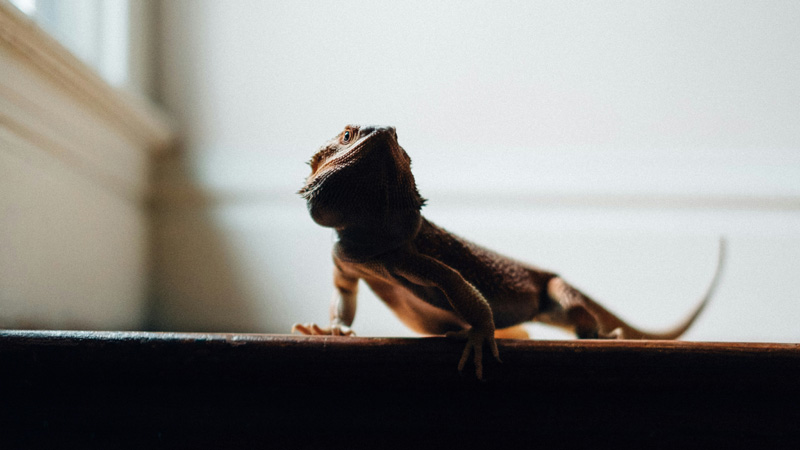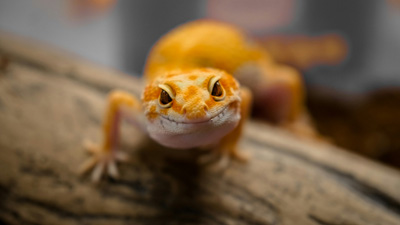The Top 5 Characteristics of Reptiles

Photo by Beth Teutschmann on Unsplash
Reptiles, a diverse group of cold-blooded animals, have roamed the Earth for millions of years. From the stealthy crocodile to the vibrant chameleon, there is something intriguing about these creatures that captures our imagination. Reptiles possess a unique set of characteristics that set them apart from other animals.
In this article, we will explore the top five characteristics that define reptiles and make them a fascinating group of creatures to study and admire.
Here is a simplified list of the top five characteristics of reptiles:
- 1. Scales or Scutes
- 2. Cold-Blooded Metabolism
- 3. Amniotic Eggs
- 4. Respiratory System Adaptations
- 5. Adaptations for Survival
Characteristic #1: Scales or Scutes
One of the most distinctive characteristics of reptiles is their scaly skin. Unlike mammals, which have hair or fur, reptiles sport scales or scutes that cover their bodies. These scales are made of a tough protein called keratin, which provides protection and prevents water loss. The size, shape, and arrangement of scales vary among different reptile species.
Scales serve various functions, including protection against predators and external injuries, regulating body temperature, and reducing water loss. In some reptiles, such as snakes, scales aid in locomotion by providing a smooth surface for sliding across the ground. Some reptiles, like the armadillo lizard, have overlapping scales that create a unique armor-like appearance.
Characteristic #2: Cold-Blooded Metabolism
Reptiles are ectothermic, often referred to as "cold-blooded" animals. Unlike mammals and birds, which maintain a relatively constant body temperature regardless of the external environment, reptiles rely on external heat sources to regulate their body temperature. This means that reptiles are highly influenced by the temperature of their surroundings.
The ability to control their body temperature based on the environment allows reptiles to conserve energy. During cooler periods, they become sluggish, conserving energy for when warmth is available. Conversely, in warmer environments, reptiles can move about and become more active. This unique metabolic characteristic has contributed to the success and adaptability of reptiles in diverse habitats worldwide.
Characteristic #3: Amniotic Eggs
Another remarkable characteristic that defines reptiles is their reproduction method. Reptiles are oviparous, meaning they lay eggs to reproduce. However, what sets reptiles apart from other egg-laying animals is the presence of amniotic eggs. Amniotic eggs have a special membrane known as the amnion, which surrounds and protects the developing embryo.
Amniotic eggs provide a safe and self-contained environment for the embryo, allowing reptiles to reproduce on land, in contrast to amphibians that generally require water for egg-laying. The amnion helps retain moisture, provide physical protection, and allow gas exchange, enabling reptiles to colonize a wide range of terrestrial habitats.
Characteristic #4: Respiratory System Adaptations
Reptiles possess unique respiratory adaptations that enable them to breathe efficiently. Unlike mammals, which utilize lungs exclusively for respiration, reptiles have developed various respiratory mechanisms to accommodate their lifestyle and metabolic needs.
Most reptiles have lungs, but the way they utilize them differs among species. Snakes, for example, have elongated lungs located along their body cavity, allowing them to accommodate their elongated body shape. Additionally, some reptiles, such as certain species of turtles and crocodiles, possess cloacal respiration, where gas exchange occurs through specialized tissues in their cloaca.
Reptiles have also evolved structures called cervical air sacs, which are flexible outpouchings of the trachea connected to the lungs. These air sacs help facilitate respiration during periods of activity and can store oxygen for extended periods, allowing reptiles to stay underwater for extended periods or engage in prolonged bouts of physical activity.
Characteristic #5: Adaptations for Survival
Reptiles have evolved a range of adaptations that contribute to their survival in diverse environments. These adaptations allow them to thrive in environments as varied as deserts, rainforests, and oceans. Here are some notable survival adaptations found in reptiles:
Crypsis and Camouflage: Many reptiles have the ability to blend seamlessly into their surroundings, providing them with excellent camouflage. Chameleons, for example, can change colors to match their environment, while the leaf-tailed gecko resembles a dead leaf, making it nearly invisible to predators.
Regeneration: Some reptiles have the capability to regenerate lost body parts. For instance, various species of lizards can regrow their tails, providing a defense mechanism against predators.
Venom and Poison: A number of reptiles, such as venomous snakes and some lizards, have evolved venom or toxic secretions to aid in hunting or defense. These adaptations can immobilize prey, deter predators, or both.
Burrowing and Aquatic Adaptations: Reptiles like tortoises and turtles have adapted to burrow in the soil for protection against extreme temperatures and to locate food sources. Aquatic reptiles, such as crocodiles and sea turtles, have streamlined bodies and specialized adaptations for swimming and hunting in water.
Hibernation and Estivation: Many reptiles display adaptations to survive periods of extreme temperatures or limited resources. Some reptiles, like certain species of turtles, undergo hibernation during cold winters, slowing down their metabolism to conserve energy and survive in low temperatures. Others, like desert-dwelling reptiles, practice estivation, a state of dormancy during hot, dry periods.
Overall, these adaptations allow reptiles to occupy a wide range of habitats and successfully navigate the challenges posed by their environments.
Conclusion
Reptiles possess a unique set of characteristics that set them apart from other animal groups. From their scaly skin and cold-blooded metabolism to their amniotic eggs and respiratory adaptations, reptiles have a remarkable array of traits that contribute to their success in diverse habitats. The ability to adapt, survive, and thrive in challenging environments has allowed reptiles to exist on Earth for millions of years and continue to captivate our imaginations.
By understanding and appreciating the top five characteristics of reptiles, we gain a deeper insight into the complex and fascinating world of these cold-blooded creatures. From the smallest gecko to the largest crocodile, reptiles continue to amaze us with their remarkable adaptations, diverse lifestyles, and significant roles in the ecosystems they inhabit. May their captivating attributes serve as a reminder of the incredible biodiversity that surrounds us and the importance of preserving these marvelous creatures for generations to come.
You May Also Like
 Other PetsThese 5 Reptiles Are Suitable for a 20-Gallon Tank
Other PetsThese 5 Reptiles Are Suitable for a 20-Gallon Tank Other PetsThe Versatile and Essential 20 Gallon Reptile Tank
Other PetsThe Versatile and Essential 20 Gallon Reptile Tank Other PetsHow Big is a 20-Gallon Reptile Tank in Inches?
Other PetsHow Big is a 20-Gallon Reptile Tank in Inches? Other PetsIs a 20-Gallon Tank OK for a Bearded Dragon?
Other PetsIs a 20-Gallon Tank OK for a Bearded Dragon? Other PetsIs a 20-Gallon Tank Big Enough for a Snake?
Other PetsIs a 20-Gallon Tank Big Enough for a Snake? Help & AdviceTop 10 Exotic Pets Perfect for Apartment Living
Help & AdviceTop 10 Exotic Pets Perfect for Apartment Living